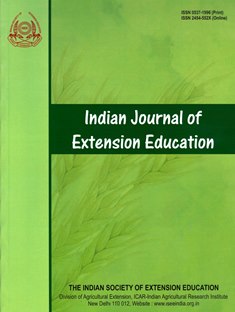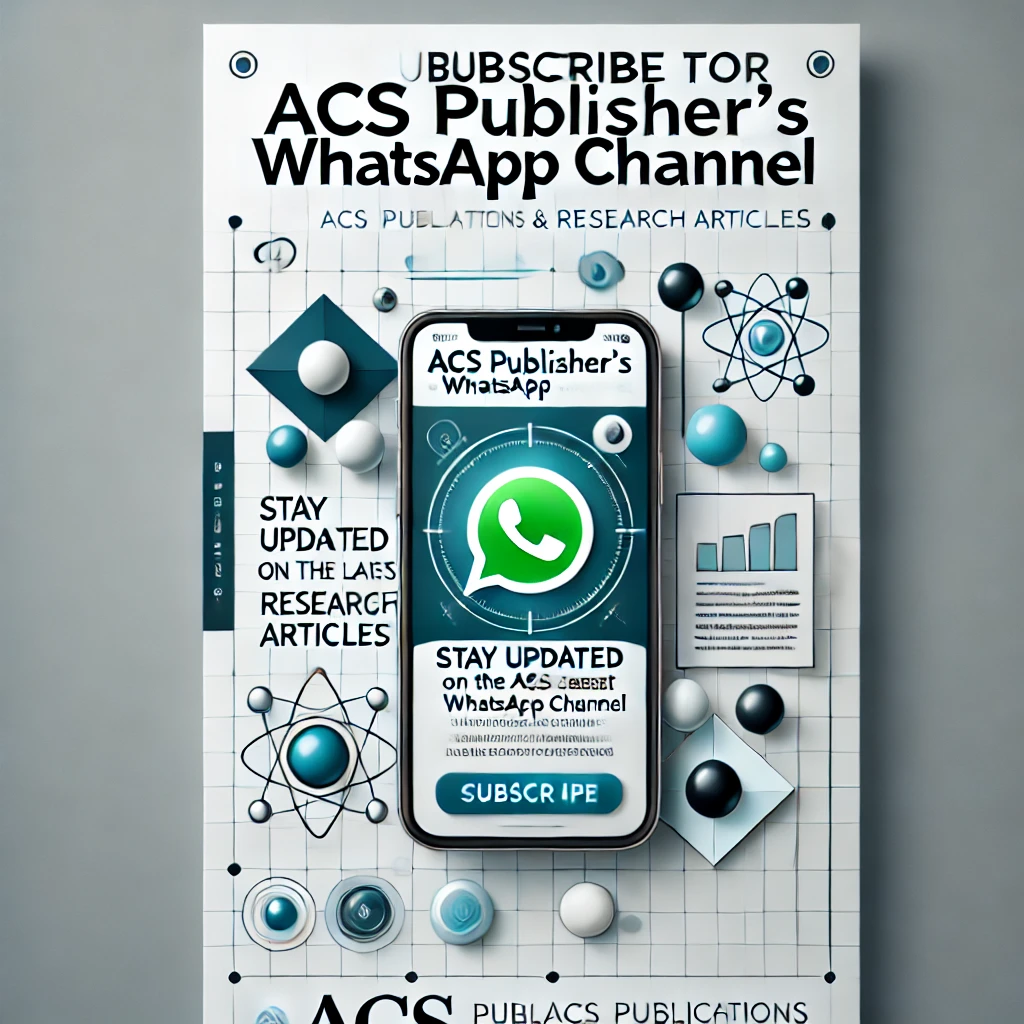Impact Assessment of Floating and Alternative Feeds (Wolffia globosa) for Fish Rearing Technologies in Tripura, India
DOI:
https://doi.org/10.48165/IJEE.2025.61419Keywords:
Aquaculture, Alternative feed, Floating feed, Impact assessment, DuckweedAbstract
The study assessed the social, economic, and environmental impacts of floating feed– and Wolffia-based fish rearing technologies disseminated by the College of Fisheries, CAU (Imphal), Lembucherra, Tripura. An after-only design was employed with 140 respondents: 100 floating feed adopters chosen through simple random sampling and 40 Wolffia adopters through complete enumeration. Impact indicators across social, economic, and environmental domains were developed using Specific, Measurable, Achievable, Relevant, and Time-bound (SMART) criteria, expert-validated, and analysed with the Wilcoxon Signed-Rank Test, paired t-tests, and Spearman’s correlation. Floating feed adoption improved production (+16.75 kg cycle–¹), net returns (+Rs. 6,644.26), and feed efficiency [Apparent feed conversion ratio (AFCR) –0.23], raising the Economic Impact Score from 32.93 to 40.23 (p = 0.000). Social participation, awareness, and income increased, while the Environmental Impact Score fell from 23.996 to 19.146, reflecting improved water quality. Wolffia adoption also enhanced production (+18.48 kg cycle–¹), returns (+Rs. 4,804.35), and AFCR (–0.25), contributing to livelihoods, nutrition, and climate-resilient aquaculture. Major constraints included high floating feed price, supplier dependence, flood induced losses, and weak extension support. Overall, both technologies boosted aquaculture productivity, profitability, and sustainability, highlighting the need for technical services, training, and institutional support.
Downloads
References
Abdelhamid, A. M., Salem, M. F., & El-Sh. Ramadan, M. (2019). Comparison between effects of sinking and floating diets on growth performance of the Nile tilapia (Oreochromis niloticus). Egyptian Journal of Aquatic Biology and Fisheries, 23(2), 347–361. https://doi.org/10.21608/ejabf.2019.31849
Ansah, Y. B., & Frimpong, E. A. (2015). Impact of the adoption of BMPs on social welfare: A case study of commercial floating feeds for pond culture of tilapia in Ghana. Cogent Food & Agriculture, 1(1). https://doi.org/10.1080/23311932.2015.1048579
Appenroth, K. J., Sree, K. S., Böhm, V., Hammann, S., Vetter, W., Leiterer, M., & Jahreis, G. (2017). Nutritional value of duckweeds (Lemnaceae) as human food. Food Chemistry, 217, 266–273. https://doi.org/10.1016/j.foodchem.2016.08.116
Belton, B., & Little, D. C. (2011). Immanent and interventionist inland Asian aquaculture development and its outcomes. Development Policy Review, 29(4), 459–484. https://doi.org/10.1111/j.1467-7679.2011.00542.x
Biswas, P., Lahiri, B., Singh, S. K., Shil, B., Chakraborty, R., & Pavan Kumar, S. T. (2025). Water resources and fisheries production dynamics for development of the fisheries in Sepahijala District of Tripura, India. Indian Journal of Extension Education, 61(1), 1–6. https://doi.org/10.48165/IJEE.2025.61101
Das, A. (2012). An economic evaluation of Aqua-model Village Scheme of Tripura (M.F.Sc dissertation). Central Institute of Fisheries Education, Mumbai, India.
Das, A., Kumar, N. R., Krishnan, M., Yadav, V. K., & Immanuel, S. (2014). Adoption of improved aquaculture technologies in Tripura, India. Fishery Technology, 51(1), 58–63.
Das, K. C., Toppo, S., Mohanty, T., Pradhan, C., Mohanta, K. N., & Giri, S. S. (2016). Cost-effective floating feeds for Indian major carps (IMC) by replacement of soybean meal with alternative feed ingredients. Indian Journal of Animal Research, 50(4), 526–528. https://doi.org/10.18805/ijar.7090
Debnath, B. (2011). An economic analysis of fish production and demand in Tripura State, India (PhD thesis). Central Institute of Fisheries Education, Mumbai, India.
DES, Govt. of Tripura. (2024). Annual report 2024. Directorate of Economics and Statistics, Planning (Statistics) Department, Govt. of Tripura, India.
DoF. (2011). Annual fish production report 2010–11. Department of Fisheries, Government of Tripura.
DoF. (2023). Annual fish production report 2022–23. Department of Fisheries, Government of Tripura.
Doran, G. T. (1981). There’s a S.M.A.R.T. way to write management’s goals and objectives. Management Review, 70(11), 35–36.
Edwards, P. (2015). Aquaculture–environment interactions: Past, present and likely future trends. Aquaculture, 447, 2–14.
Garlock, T. M., Asche, F., Anderson, J. L., Eggert, H., Anderson, T. M., Che, B., & Tveteras, R. (2024). Environmental, economic, and social sustainability in aquaculture: The aquaculture performance indicators. Nature Communications, 15(1), 5274.
Joffre, O. M., Klerkx, L., Dickson, M. W., & Verdegem, M. C. J. (2017). How is innovation in aquaculture conceptualized and managed? A systematic literature review and reflection framework to inform analysis and action. Aquaculture, 470, 129–148.
Kawarazuka, N., & Béné, C. (2011). The potential role of small fish species in improving micronutrient deficiencies in developing countries: Building evidence. Public Health Nutrition, 14(11), 1927–1938.
Kumar, G., Engle, C. R., & Tucker, C. (2018). Factors driving aquaculture technology adoption. Aquaculture Economics & Management, 22(2), 178–199.
Lahiri, B., Kurmi, R. K., Singh, S. K., Ghosh, A., Pal, P., Pavan Kumar, S. T., Nirmalkar, C., & Debnath, A. (2024). Determinants of digitised farm information outreach in aquaculture: A case of mobile phone application for smallholder fish farmers in North East India. Journal of the Knowledge Economy. https://doi.org/10.1007/s13132-024-02471-1
Little, D. C., Newton, R. W., & Beveridge, M. C. M. (2016). Aquaculture: A rapidly growing and significant source of sustainable food? Status, transitions and potential. Proceedings of the Nutrition Society, 75(3), 274–286.
Mandal, R. N., Chattopadhyay, D. N., Paul, B. N., & Mukhopadhyay, P. K. (2012). The duckweed (Wolffia arrhiza) as feed ingredient for nursery rearing of Labeo rohita and Labeo calbasu. Journal of Inland Fisheries Society of India, 42(2), 21–27.
Meinam, M., Lahiri, B., Ghosh, A., Singh, S. K., Bharati, H., Upadhyay, A. D., Pal, P., Sanjenbam, B., & Ngasotter, S. (2025). Aquatic ecosystem, fish diversity and conservation strategies of the fragile Eastern Himalayas: A comprehensive review with a focus on Loktak Lake. Wetlands, 45, 96. https://doi.org/10.1007/s13157-025-01978-w
Munguti, J., Muthoka, M., Chepkirui, M., Kyule, D., Obiero, K., Ogello, E., Madalla, N. A., & Kwikiriza, G. (2024). The fish feed sector in Kenya, Uganda, Tanzania, and Rwanda: Current status, challenges, and strategies for improvement–A comprehensive review. Aquaculture Nutrition, 8484451. https://doi.org/10.1155/2024/8484451
Munkit, J., Nithikulworawong, N., Mapanao, R., & Jiwyam, W. (2025). Biomass production of water-meal (Wolffia globosa) and its chemical composition and amino acid profiles when grown with chemical fertilizer in an outdoor polyethylene (PE) tank cultivation system. Aquaculture Studies, 25(5), 236–244. http://doi.org/10.4194/AQUAST2439
Nath, K., Munilkumar, S., Patel, A. B., Kamilya, D., Pandey, P. K., & Sawant, P. B. (2021). Lamellidens and Wolffia canopy improves growth, feed utilization and welfare of Labeo rohita (Hamilton, 1822) in integrated multi-trophic freshwater aquaculture system. Aquaculture, 534, 2–7.
Ng, W. K., & Romano, N. (2013). A review of the nutrition and feeding management of farmed tilapia. Reviews in Aquaculture, 5(4), 220–254.
Niangti, W., Singh, Y. J., Lahiri, B., Upadhyay, A. D., Pal, P., Meinam, M., Huirem, B., & Monsang, M. W. (2025). Training needs of fish farmers for the development of fisheries and aquaculture in Meghalaya. Indian Journal of Extension Education, 61(2), 45–50. https://doi.org/10.48165/IJEE.2025.61209
Nirmalkar, C., Lahiri, B., Ghosh, A., Pal, P., Baidya, S., Shil, B., & Kurmi, R. K. (2022). Perceived knowledge and attitude of fisheries extension professionals on usage of ICTs in Tripura. Indian Journal of Extension Education, 58(2), 58–64.
Noor, M. A., Fiaz, S., Nawaz, A., & Nawaz, M. M. (2018). The effects of cutting interval on agro-qualitative traits of different millet (Pennisetum americanum L.) cultivars. Journal of the Saudi Society of Agricultural Sciences, 17(3), 317–322.
Reed, M. S., Ferré, M., Martin-Ortega, J., Blanche, R., Lawford-Rolfe, R., Dallimer, M., & Holden, J. (2021). Evaluating impact from research: A methodological framework. Research Policy, 50(4), 104147.
Rej, N., Dana, S. S., Mondal, A. H., Sarkar, M. R., Ray, D., Ahammed, A., & Karjee, R. (2025). Aquaculture practices and knowledge level of fish farmers in Purulia District of West Bengal. Indian Journal of Extension Education, 61(3), 7–13. https://doi.org/10.48165/IJEE.2025.61302
Saha, R. K., Sastry, E. V. D., Haldhar, S. M., & Singh, M. P. (2020). Inventory of CAU Technologies for NEH Region. DEE, CAU, Imphal.
Said, D. S., Chrismadha, T., Mayasari, N., Febrianti, D., & Suri, A. R. M. (2022). Nutrition value and growth ability of aquatic weed Wolffia globosa as alternative feed sources for aquaculture system. IOP Conference Series: Earth and Environmental Science, 950, 012044. https://dx.doi.org/10.1088/1755-1315/950/1/012044
Sajeev, M. V., Ramesha, T. J., Chethan, N., & Gopika, R. (2023). Factors influencing fish purchase and consumption behaviour of Koraga and Soliga tribes, Karnataka, India. Indian Journal of Extension Education, 59(4), 86–90. http://doi.org/10.48165/IJEE.2023.59418
Seephua, N., Boonarsa, P., Li, H., Thammapat, P., & Siriamornpun, S. (2025). Nutritional composition and bioactive profiles of farmed and wild watermeal (Wolffia globosa). Foods, 14(10), 1832. https://doi.org/10.3390/foods14101832
Valladão, G. M. R., Gallani, S. U., & Pilarski, F. (2018). South American fish for continental aquaculture. Reviews in Aquaculture, 10(2), 351–359. https://doi.org/10.1111/raq.12164
Yadav, N. K., Patel, A. B., Priyadarshi, H., & Baidya, S. (2025). Salinity stress-induced impacts on biomass production, bioactive compounds, antioxidant activities and oxidative stress in watermeal (Wolffia globosa). Discover Applied Sciences, 7, 106.
Downloads
Published
Issue
Section
License

This work is licensed under a Creative Commons Attribution-NonCommercial-NoDerivatives 4.0 International License.

